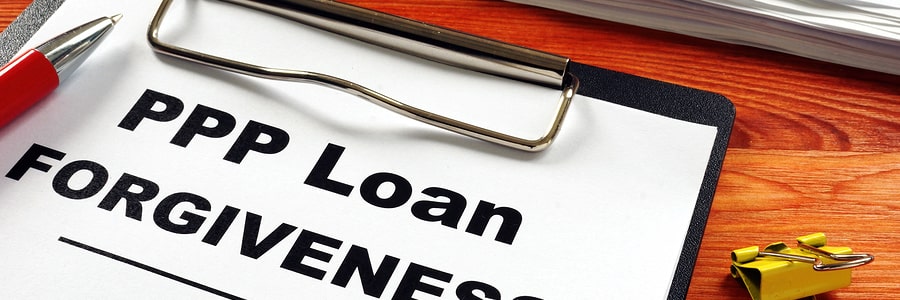By Steve Whitehill
2020 was a tough year for business owners. Many small business owners are struggling to stay afloat during these challenging economic times. If you are one of them and are considering applying for loan forgiveness under the SBA’s Paycheck Protection Program (PPP), it would be in your best interest to get familiar with the guidelines of the process first. Understanding the forgiveness process will better your chances to get approved. In doing so, you’ll be able to avoid any hiccups by addressing issues before they arise.
A few things to be aware of:
The Bank’s Calculator and Internal Review Process
As a borrower, you have the right to apply for loan forgiveness at any time prior to maturity of the loan. You should check if the lender will require any documents to support your claim. It’s also important to note that the process is subject to change and will likely evolve in the coming months. It’s important to keep abreast of such changes in order to ensure an efficient review process.
The Timeline
Typically, the lender has 60 days once the loan application has been received to notify the SBA of their decision. From there, the lender has 90 days to remit funds, depending on the decided-upon amount. If the lender decides against loan forgiveness, the lender must notify both the borrow and the SBA. The borrower has 30 days to let the SBA know that they are requesting a review. The SBA has 5 days from then to let the borrower know if the request is denied. If the request for review is accepted, the SBA has the 90-day period to review all documentation.
Areas Subject to Review
The SBA has the right to review any loan, and the areas subject to review are as follows: Eligibility, necessity, calculation of the loan amount, use of proceeds and calculation of the loan forgiveness amount. It should be noted that the SBA will review any loan over $2M.
Where to Begin?
The first step is familiarizing yourself with the process outlined above. As part of the December 2020 Stimulus Bill Congress passed some additional easing in loan forgiveness. Included in this package are the following changes:
- At least 60% of the loan must be used for payroll costs.
- The remaining 40% of the loan can be spent on the following expenses:
- qualifying mortgage interest or rent obligations;
- utility costs;
- operations costs such as business and accounting software;
- property damage such as destruction from civil unrest that was not insured;
- supplier costs on essential goods; and
- worker protection expenditures such as personal protective equipment (PPE) and sneeze-guards.
- The loan needs to be used, in good faith, to maintain similar levels of employment and pay what they had prior to the pandemic.
- The Economic Injury Disaster Loan (EIDL) grants will not impact PPP loan forgiveness. Originally, loan forgiveness would be reduced by the EIDL grants.
- Businesses that had a loan of less than $150,000 will be able to fill out a simplified one-page application. The modified application will be available soon from the SBA. Most likely it will be similar to the one-page 3508S loan forgiveness form which is now used for loans up to $50,000.
For more information, visit the SBA’s website and contact us if you’d like to speak with one of our experts.



